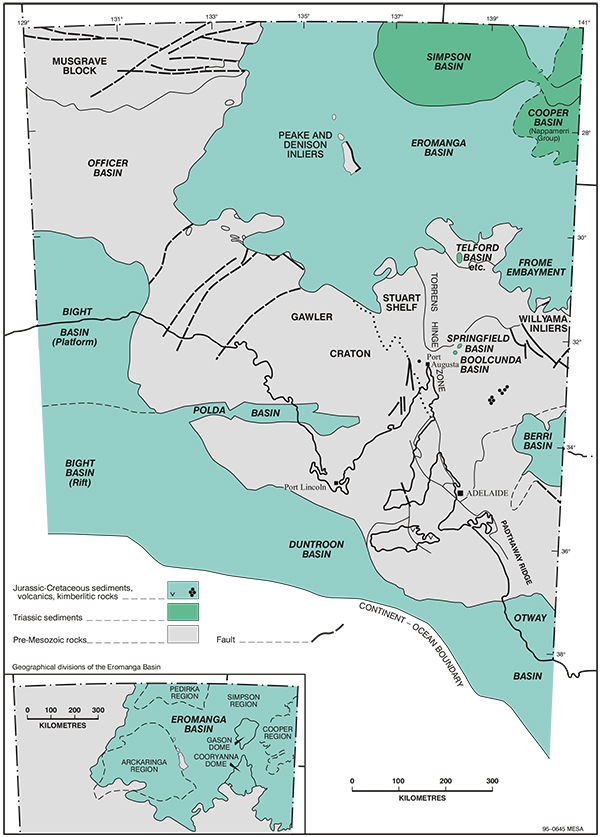Lasting from about 252 to 66 million years ago, the Mesozoic was marked by significant geological and biological changes worldwide, including in South Australia. During this time, South Australia was part of the supercontinent Gondwana, which eventually broke apart to form the modern continents we see today.
The early part of the Mesozoic in South Australia, known as the Triassic period, was a time of arid to semi-arid conditions, with rivers and lakes forming and receding across the region. This was followed by the Jurassic period, which saw the formation of the Great Artesian Basin, a vast underground water system that is still important to South Australia's agriculture and mining industries.
It was in the Early Jurassic that a change in geotectonic regime produced a fundamental paleogeographic change. Plate movements induced crustal instability and created two tectonically distinct basin types of different style and age. Epicratonic basins, located inland and typified by the Eromanga Basin, are broad, continental downwarps which developed in response to distant plate-boundary interactions north and east of the Australian continent.
In contrast, rift basins such as the Otway Basin are located along the southern coastal margin where continental extension and rifting led to the eventual separation of Australia from Antarctica during the breakup of Gondwana.
Distribution of Mesozoic basins in South Australia.
Sedimentation during the Jurassic and Early Cretaceous took place in a generally moist, cool to cold climate with possible aridity early in the Jurassic. Terrestrial conditions prevailed at first but gave way gradually to marine conditions as warping and rifting progressed, and sea level rose. In the epicratonic basins, terrestrial conditions returned after only a relatively brief marine transgression when continental uplift in that region outpaced rising sea level. In the rift basins, however, marine or marginal marine conditions prevailed and continued into the Tertiary. The Jurassic-Cretaceous deposits, and those of the Triassic, are pre-eminently clastic; it was not until the Tertiary that major carbonate deposition occurred.
During the late Cretaceous period, the climate became much wetter and warmer, leading to the development of extensive rainforests in some areas. The Flinders Ranges were formed during this time, as tectonic activity pushed up the land and erosion sculpted the mountains into their current shape.
The Mesozoic in South Australia was also marked by significant biological developments, including the emergence and diversification of dinosaurs and the first mammals. Fossil evidence of these ancient creatures can be found throughout the state, including at the opal fields of Coober Pedy and the Naracoorte Caves, which are now a UNESCO World Heritage Site.
Overall, the Mesozoic era in South Australia was a time of significant geological and biological change, and its legacy can still be seen and studied today through the state's unique landscape and rich fossil record.
To find out more about the work the GSSA is undertaking to continue to build on geological understanding the Mesozoic in South Australia, and especially of the formation of the Eromanga Basin, read about Bulletin 57 by GSSA Senior Geologist Stephen Hore, working with Neville Alley.



